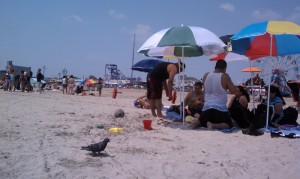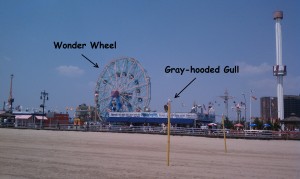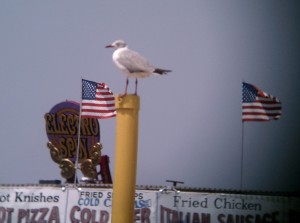When we think of urban birds, we usually think of pigeons, starlings, and house sparrows. Maybe some robins, crows, and gulls. Urban bird habitats might be parks, or yards. But pretty much any habitat can be urbanized–including beaches, as my quick trip over to Coney Island in Brooklyn, NY revealed today.
In addition to this pigeon, I saw dozens of Laughing Gulls and Common Terns, a few American Oystercatchers, and other beach birds–all within a stone’s throw of buildings, amusement park rides, and thousands of beach goers.
The star of the day was the Gray-hooded Gull, a Southern Hemisphere bird hanging out on the Coney Island beach this past week–only the second one reported from North America.
For birders, a mega-rarity like this is sure to draw a crowd. But while enjoying the rarity show, it is good to take a moment to consider how urbanization is creating a whole new class of urban birds–beach and sea birds that have to adapt to a heavy human presence when we take over and build on their home turf. It is a reminder that all birds can be urban birds–from the most rare and specialized to the most common and mundane. As cities take over the beaches, it falls to urban planners and urban residents to ensure a bright future for these beach birds.



